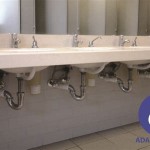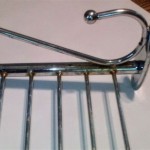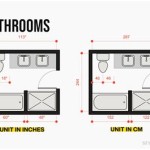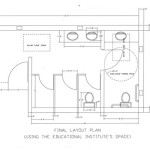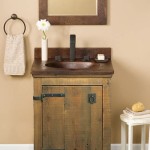Why Are There Small Flying Bugs In My Bathroom?
The presence of small flying bugs in a bathroom is a common household concern. These unwanted guests are not only a nuisance but can also indicate underlying issues within the plumbing or the general cleanliness of the bathroom environment. Identifying the type of bug and understanding its habits is crucial for implementing effective control and prevention strategies.
Several species of small flying insects are commonly found in bathrooms, each with its own distinct characteristics and preferred breeding grounds. Accurately identifying the culprit is the first step toward resolving the problem. The most frequent offenders include drain flies, fruit flies, phorid flies, and fungus gnats. These insects thrive in moist environments and are often attracted to organic matter, such as decaying food particles, sewage buildup, and mold growth.
The bathroom, with its inherent humidity and plumbing fixtures, provides an ideal habitat for these bugs to breed and multiply. Leaky pipes, clogged drains, and improper ventilation create conditions conducive to their survival. Addressing the root cause of the infestation, rather than simply eliminating the visible insects, is essential for long-term success.
Identifying Common Bathroom Bugs
Differentiating between the various types of small flying bugs found in bathrooms requires careful observation. Each species possesses unique physical characteristics and behavioral patterns.
Drain flies, also known as moth flies or filter flies, are small, fuzzy insects measuring approximately 1/8 inch in length. They are typically gray or brownish-black and have distinct, rounded wings that resemble moth wings. Drain flies are often seen hovering near sink drains, shower drains, and toilets. Their larvae develop in the gelatinous film that accumulates inside drains, feeding on organic matter and sewage. The adult flies are weak fliers and tend to hop or run across surfaces rather than fly long distances.
Fruit flies are small, reddish-brown insects with red eyes. They are attracted to fermenting fruits and vegetables, as well as other sources of sugar and vinegar. While fruit flies are more commonly associated with kitchens, they can also be found in bathrooms if there are spills or residues of sugary substances, such as spilled shampoo or lotion. They are strong fliers and can quickly infest an area where food sources are available. Fruit flies lay their eggs near the surface of fermenting materials, and the larvae feed on the decomposing matter.
Phorid flies, also known as humpbacked flies or coffin flies, are small, dark-colored insects with a distinctive humpbacked appearance. They are attracted to decaying organic matter, including sewage, garbage, and carrion. Phorid flies are often found in bathrooms with leaky pipes or sewage backups. They can also breed in drains and under floor tiles where moisture and organic matter accumulate. Unlike drain flies, phorid flies are strong fliers and can travel long distances to find suitable breeding sites. They are also known for their ability to reproduce rapidly, making them a difficult pest to control.
Fungus gnats are small, dark-colored insects with long legs and clear wings. They are attracted to moist soil and decaying organic matter. Fungus gnats are commonly found in bathrooms with houseplants or damp areas around sinks and showers. Their larvae feed on fungi and decaying plant material in the soil. While adult fungus gnats are mostly a nuisance, their larvae can damage plant roots. They are weak fliers and tend to hover near potted plants or damp surfaces.
Sources of Infestation: Addressing the Root Cause
Eliminating small flying bugs in the bathroom requires identifying and addressing the source of the infestation. Focusing solely on killing the adult insects will only provide temporary relief, as new generations will continue to emerge from their breeding grounds.
Drain flies, as their name suggests, primarily breed in drains. The gelatinous film that lines the inside of drains provides an ideal environment for their larvae to feed and develop. This film consists of a mixture of organic matter, bacteria, and sewage. To eliminate drain flies, it is necessary to thoroughly clean the drains to remove this buildup. This can be accomplished using a variety of methods, including enzymatic drain cleaners, boiling water, and drain snakes. It is crucial to repeat the cleaning process regularly to prevent the re-accumulation of organic matter.
Fruit flies are attracted to fermenting materials. In the bathroom, this could include spilled shampoo, lotion, or other sugary substances. Cleaning up any spills promptly and thoroughly can help to eliminate potential food sources for fruit flies. Additionally, emptying trash cans regularly and ensuring they are properly sealed can prevent fruit flies from being attracted to the bathroom. Locating and removing any overripe fruit or vegetables that may be stored in nearby areas is also essential.
Phorid flies are often associated with sewage leaks or backups. If phorid flies are present in the bathroom, it is crucial to inspect the plumbing for any signs of leaks. This includes checking under sinks, around toilets, and behind walls. Any leaks should be repaired promptly to eliminate the source of moisture and organic matter that attracts phorid flies. In cases of sewage backups, it is necessary to contact a professional plumber to clean and disinfect the affected areas. Phorid flies can also breed in damp areas under floor tiles or in cracks in the grout. Sealing these areas can help to prevent them from becoming breeding grounds.
Fungus gnats are attracted to moist soil. If houseplants are present in the bathroom, it is important to avoid overwatering them. Allowing the soil to dry out slightly between waterings can help to prevent fungus gnats from breeding. Additionally, using well-draining potting soil and avoiding the accumulation of standing water in saucers can also help. If fungus gnats are already present, consider repotting the plants with fresh soil or using insecticidal soap to control the larvae in the soil.
Preventive Measures: Maintaining a Bug-Free Bathroom
Preventing infestations of small flying bugs in the bathroom requires implementing proactive measures to maintain a clean and dry environment. Regular cleaning and proper ventilation are essential for discouraging bug activity.
Regularly clean the bathroom surfaces, including sinks, counters, floors, and toilets. Use a disinfectant cleaner to kill bacteria and remove any organic matter that may attract bugs. Pay particular attention to areas where moisture tends to accumulate, such as around sinks and showers. Cleaning drains regularly with enzymatic drain cleaners can help to prevent the buildup of organic matter that attracts drain flies and phorid flies.
Ensure proper ventilation in the bathroom. Run the exhaust fan during and after showering or bathing to reduce humidity levels. Open windows to allow fresh air to circulate. High humidity creates a favorable environment for bugs to breed and multiply. By reducing humidity, you can make the bathroom less attractive to these pests. Consider using a dehumidifier in bathrooms with poor ventilation.
Repair any leaks promptly. Leaky pipes and faucets provide a constant source of moisture that can attract bugs. Inspect plumbing regularly for signs of leaks and repair them as soon as possible. Sealing cracks and crevices in walls and floors can also help to prevent bugs from entering the bathroom. Caulking around sinks, showers, and toilets can prevent water from seeping into hidden areas where bugs can breed.
Empty trash cans regularly and keep them properly sealed. Trash cans can attract fruit flies and other pests if they contain food scraps or other organic matter. Using trash cans with tight-fitting lids and emptying them frequently can help to prevent infestations. Avoid storing open containers of sugary or fermented substances in the bathroom.
Inspect houseplants regularly for signs of pests. Fungus gnats and other pests can infest houseplants if they are not properly cared for. Check the soil for signs of larvae or adult insects. Use insecticidal soap or other appropriate treatments to control infestations. Avoid overwatering plants and ensure proper drainage.
Consider using insect traps or repellent devices. Flypaper, sticky traps, and electronic insect killers can help to capture adult insects. However, these devices are only effective at controlling the adult population and will not eliminate the source of the infestation. Insect repellent sprays can also be used to deter bugs from entering the bathroom. However, these sprays should be used sparingly and with caution, following the manufacturer's instructions.

How To Get Rid Of Drain Flies Moth And Prevent An Infestation Pest Defence

5 Easy Ways To Get Rid Of Drain Flies Fast
We Are Seeing Small Flies In Our Bathroom Any Idea What Could Be Causing Them To Show Up Quora

Identify Tiny Bugs In Bathroom And Get Rid Of Them For Good
Jab Plumbing Solutions Blog Blocked Drain Plumbers

Tiny Bugs In Your Bathroom Identification Control Worst Room

Little Black Flying And Walking Insects In My Bathroom

Why Are There Bugs In My Bathroom

How To Get Rid Of Drain Flies 5 Easy Ways Vinx Pest Control

How To Get Rid Of Drain Flies
Related Posts
